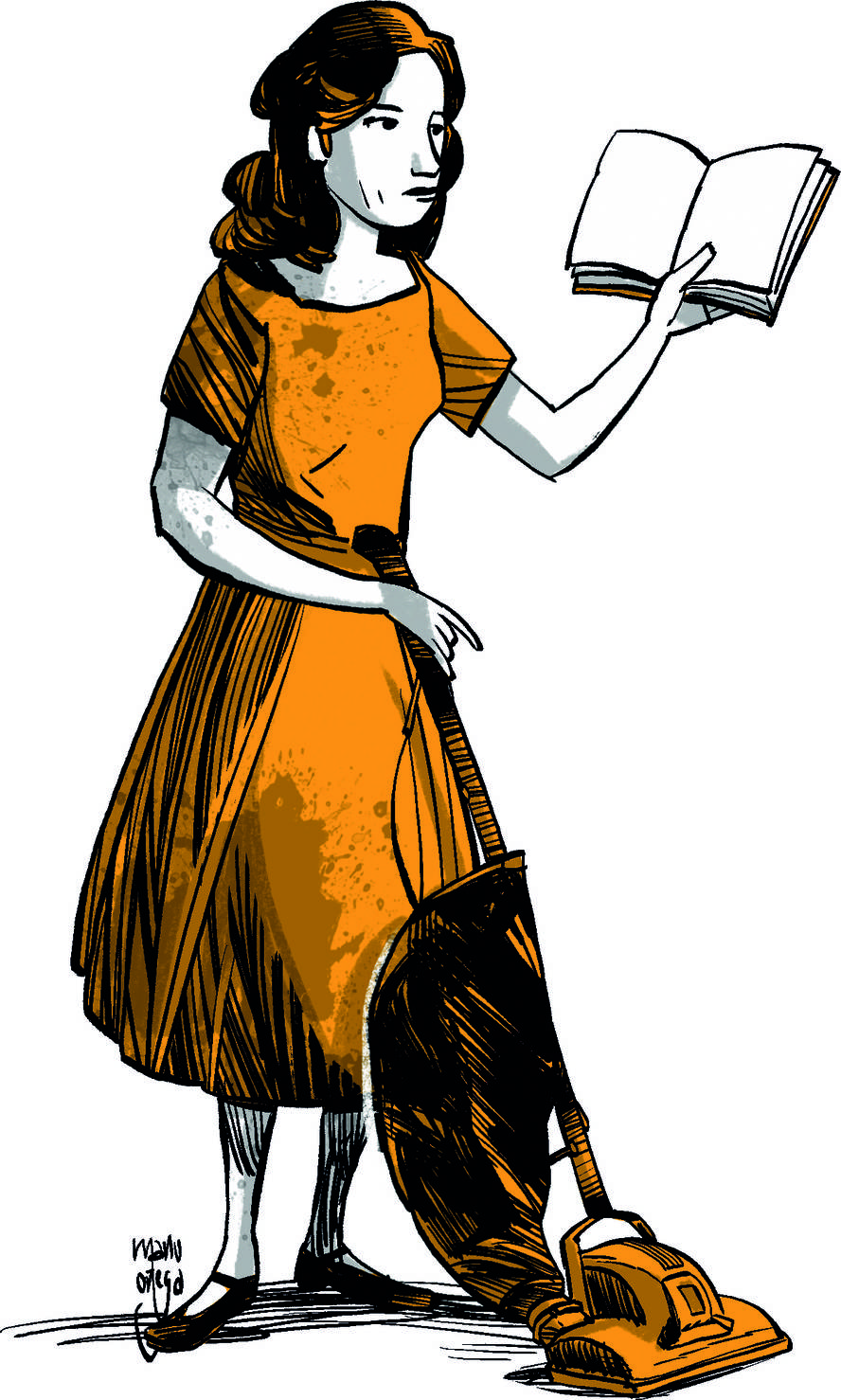Joan Feynman. Clarify the laws of heaven on the laws of society
Sitting in a chair, I cried, I was very distressed. He was still eight years old. And I couldn't understand why he couldn't do what his brother did. But his mother had made it clear: “Women can’t do science because they’re not made for it.”
Jehan couldn't accept it. Parents always encouraged their brother and both to take an interest in everything around them. They didn't have a chance to study, but they were very fond of science and they read everything they could. And they had no doubt that Richard, his brother, was a scientist.
His brother saw no problem with his sister learning science. She was nine years old, and when Joan was two, she started teaching her mathematics. At the age of five, he hired him as an electronic lab assistant in his classroom for two cents a week.
His brother taught him how amazing it was that the dog of the house, the device to make waffles, and that the LORD was made of atoms. He grabbed his hand, placed it on the edge of a painting and made it repeat, while making a straight triangle: “The sum of squares of cateches equals the square of hypotenuse.” Jehan didn't understand anything, but he loved to recite what his brother recited as a poem.
One night he pulled him out of bed and drove him to a nearby golf course in search of darkness. He was amazed at the dances of light that were seen in the dark sky. “It’s a boreal aurora,” his brother told him, “no one knows how they happen.”
Raised in that environment, it was a terrible blow to know from the mother's mouth that her dream was impossible, that she could not be a scientist. And he was desperate until he was 14, when his brother gave him an astronomy book.
It was a university textbook. I was starting to read, getting stuck and getting back started. It was like this for months, but it continued. And “407. When I got to the page I found a graph that changed my life,” I would count later. Even after many years, I would close my eyes and recollect the foot of the graph on that page: “Relative intensities of the Mg+ absorption line in angstrom 4.481… Source: ‘Star atmospheres’ by Cecilia Payne.
- Cecilia Payne! It was scientific proof that a woman was able to write a book that could be cited in such a text.”
Seeing that he had that calling, in the end, his parents decided to help him. He studied physics at Oberlin College University in 1944. There were only two more women, and it wasn't easy. They had to suffer discrimination and more than an injustice. However, Joan Feynman managed to complete her studies.
When it was time to choose the topic for her doctoral thesis, she doubted the relativity and physics of solids. When he consulted the teachers, they didn't help him much. One of them told him that the best thing he could do was investigate the spider webs, which he would find while cleaning them.
He chose the physics of the solids and made the thesis entitled “Absorption of infrared radiation in crystals with diamond structure”. But then he didn't find a job. She also had a son, and she seemed to be a mother and a housewife.
He did. For three years, one day, as I threw the drain out of the kitchen window, I realized I needed help. Fortunately, the therapist got the medicine right: back to work.
Although it seemed difficult, Lamont tried it at the Observatory, about 30 km from his house. And they offered him three interesting projects. He chose geomagnetism. To make it compatible with the care of the children, he started working part-time, investigating how the solar wind affects the magnetic field of the Earth.
Among other things, he discovered the shape of the magnetosphere. In addition, he realized that the northern lights may be related to the interaction of the solar wind and the magnetosphere. He was passionate and eager to tell his brother. But he thought that if he told his brother, who was so smart, he would decipher the mystery before him. Then he offered him a deal: “Look, I don’t want to compete with each other, so we repair physics with each other. I will take the auroras and you will take the rest of the universe.” And my brother accepted it.
It was dedicated to the most cutting-edge research. However, in 1971 there was the economic recession in the United States, which led to the destruction of employment.
Again, he loves home. And again depression.
Desperate, he asked the rabbi to allow him to attend the meetings he himself organized for the unemployed. He accused him of selfishness for trying to find a job when so many men were out of work.
He was eventually transferred to the National Center for Atmospheric Research in Boulder, Colorado. From that moment on, he decided to “pursue research funds around the country, like the Laponians behind the snow deer.” He went to Washington, to the National Science Foundation, then to the Physics Department at Boston University, and finally, in 1985, to the Jet Propulsion Laboratory at NASA.
In this tour, he carried out numerous studies and discoveries. He studied, among other things, the sunspots and the cycles of the sun, and the influence of these cycles on the climate. It also made predictive models of how solar particles affect satellites.
And he explained how the auroras were produced; using satellite data Explorer 33, he showed that the magnetic fields of the solar wind occur when they affect the Earth's magnetic field.







